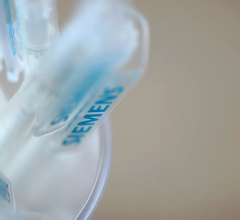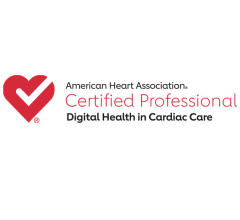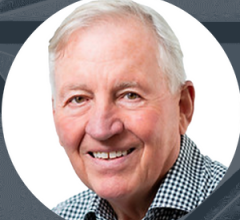
The Transmedics Organ Care System (OCS) Heart, or “Heart in a Box,” enables transplant surgeons to travel to much farther destinations to procure transplant hearts by acting as a miniature intensive care unit that keeps the heart alive.
April 5, 2021 — Smidt Heart Institute transplant surgeons Dominic Emerson, M.D., and Pedro Catarino, M.D. know how to be spontaneous. At any given moment, they can get the call that a donor heart or lungs are available, requiring them to quickly board a private aircraft to procure the vital organs. But until recently, those flights were quick jaunts lasting no more than four hours — the time a donor heart can survive on ice. Now that is all changing, thanks to a medical device called the Transmedics Organ Care System (OCS) Heart, or “Heart in a Box,” which enables transplant surgeons to travel to much farther destinations to procure lifesaving organs by acting as a miniature intensive care unit that keeps the heart alive.
“Cedars-Sinai has the biggest adult heart transplant program in the world and takes on some of the most complex surgical cases,” said Emerson, associate surgical director of heart transplant and mechanical circulatory support and surgical co-director of the Cardiac Surgery Intensive Care Unit at Cedars-Sinai. “The Heart in a Box technology is helping break down a major barrier of transplantation, ultimately offering many patients a second chance at life.”
How the Transmedics Organ Care System Works
The OCS Heart is the only such device currently under review with the U.S. Food and Drug Administration (FDA) and is being used as part of a clinical trial at Cedars-Sinai. Fardad Esmailian, M.D., surgical director of heart transplant and mechanical circulatory support at Cedars-Sinai, says the device has already gained approval in Europe and Australia and has been tested in the U.S. for more than five years.
“Cedars-Sinai was one of the largest enrolling clinical trial sites for the Organ Care System’s Proceed II clinical trial and remains active in enrolling patients in its current EXPAND and Donors After Circulatory Death Heart Trial (DCD) clinical trials,” said Esmailian, who has served as principal investigator for all the trials. “We are eager to continue witnessing the improved access this system has brought to our patients.”
Once a donor heart is removed from the body, instead of being placed on ice in a cooler, the heart is connected to a portable device that keeps it at a human-like, metabolically active state, allowing transplant surgeons to travel farther distances to retrieve donor hearts.
“Our hope is to increase the transplantation rate by about 20% or 30% using this kind of a device,” said Joanna Chikwe, M.D., the Irina and George Schaeffer Distinguished Chair in Cardiac Surgery in honor of Alfredo Trento, MD, professor and chair of the Department of Cardiac Surgery in the Smidt Heart Institute. “In doing so, our institute can heal the hearts of even more patients who otherwise have nowhere to turn.”
A Heart and Lungs For Transplant Travel From Hawaii
Recently, Emerson and Catarino flew to Hawaii, a state with limited heart transplant availability, to procure a heart and lungs from a donor. The heart spent more than seven hours outside of a human body being oxygenated and maintained in a beating state with the OCS Heart device.
“We spent the long flight home monitoring and caring for the heart,” said Catarino, a leader in the field of heart and lung transplantation and aortic surgery. “The whole travel team was eager to land, knowing two lives would be saved that very night.”
Once the surgeons, heart and lungs arrived at Cedars-Sinai, Emerson headed straight into surgery to perform the heart transplant. His colleague, Dominick Megna, M.D., surgical director of the Lung Transplant Program, performed the lung transplant.
Donald Stivers, 74, who had been battling ischemic cardiomyopathy, received the heart as part of an ongoing clinical trial evaluating the system as a way to use hearts that would otherwise not be available.
“There are so many mixed emotions, but I am so fortunate — the joy is truly overwhelming,” said Stivers, who lives in Three Rivers, Calif., and who is eager to resume his once-active lifestyle of hiking in the mountains surrounding his home.
Stivers opted into the OCS Heart clinical trial because of his age and height of 6 feet, 4 inches — two qualifiers that could make it extremely difficult to find a donor match.
“I was told I had six to 12 months left to live if a heart didn’t become available,” recalled Stivers.
But when he and his wife got the call late one night in early March, his feelings of desperation turned to hope, knowing he could now be given more moments in the mountains and time spent with his children, grandchildren and great-grandchildren.
"There is hope out there," said Stivers. “And I found mine through this donor and the team at Cedars-Sinai.”
For Emerson and his fellow transplant surgeons, Stivers’ journey makes the long flights, middle-of-the-night surgeries and often-complex cases more than worthwhile.
“Our jobs are predictably unpredictable,” said Emerson. “At the same time, it’s extremely rewarding. At the end of the day, people like Don are so desperately sick, yet you can give them high-quality, memory-building time back to enjoy life.


 November 14, 2025
November 14, 2025 









